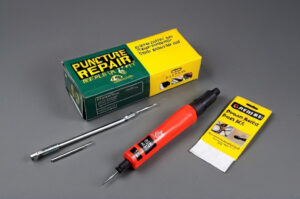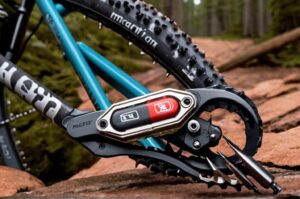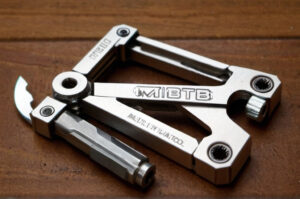Introduction to On-Trail Inflation Tools
Every mountain biker understands the importance of being prepared on the trail, and one of the essential categories of gear includes tools for tire inflation. Whether conquering rugged mountains or winding forest paths, a flat tire can ruin a great ride without the means for a quick fix.
Among the variety of solutions available, Mini Pumps and CO2 Inflators are the most popular. Each tool has its merits and deciding which to carry can greatly affect your trail experience. This article explores both tools, providing insight to help you make an informed decision.
Factors affecting your choice will include convenience, space, the speed of inflation, and frequency of use, detailed further in this comparative guide on mini pump vs CO2 inflator.
Understanding Mini Pumps
A Mini Pump is a compact, manually operated pump that fits on your bike frame or can be stashed in a backpack. The principle behind these devices is simple: they use a piston and chamber to push air into the tire via repeated hand strokes.
The primary advantage of a Mini Pump is its unlimited usage, as it does not rely on any external refills. It’s a reliable tool that can get you back on track albeit with a bit of effort. Many bikers favor it for its resilience and minimal operational cost.
However, the downside includes its physical demand and slower inflation time, especially for high-volume tires. It’s also typically larger and heavier than a CO2 inflator, making it less ideal for riders who prioritize light travel.
In situations involving longer rides or when traveling through remote areas where reliability is crucial, carrying a Mini Pump is advisable.
Exploring CO2 Inflators
CO2 Inflators use compressed carbon dioxide to inflate tires almost instantaneously. They consist of a small valve head and a CO2 cartridge that together are smaller and lighter than most Mini Pumps, making them a favored choice for competitive riders seeking speed and efficiency.
The primary benefit is the rapid inflation capability, allowing you to get back to riding within seconds. This efficiency can be crucial during races or when you’re pressed for time.
The drawbacks include a reliance on disposable cartridges, which adds operational costs and requires cautious use to avoid waste. Moreover, once a cartridge is spent, it’s spent, which might leave you stranded if you run out.
CO2 Inflators are ideal for short rides or competitive events where time is of the essence and where carrying multiple cartridges is feasible.
Comparative Analysis: Mini Pump vs CO2 Inflator
When assessing the physical size and weight, CO2 inflators are the definitive winners. They are not only lighter but also more compact compared to Mini Pumps. However, in terms of inflation efficiency, CO2 inflators provide a quicker solution, whereas Mini Pumps require more time and physical effort.
In the context of sustainability and longevity, Mini Pumps outshine since they don’t necessitate continual replacement and environmental concern regarding used cartridges. The initial cost of a Mini Pump might be higher, but the lack of ongoing expenses makes it economically appealing over time.
Cost-effectiveness plays a crucial role, with CO2 inflators maybe appearing cheaper initially but potentially more expensive in the long run due to the need for new cartridges.
User Perspectives and Expert Opinions
Feedback from seasoned mountain bikers often highlights the reliability of Mini Pumps, whereas those who prefer speed opt for CO2 Inflators. Professional mechanics usually advocate for the durability and long-term value of Mini Pumps, noting their simplicity and lower overall maintenance.
Popular models such as the Lezyne Gauge Drive HP and the PRO BIKE TOOL CO2 Inflator garner positive reviews for their robust construction and ease of use respectively. According to recent surveys, casual riders show a preference for Mini Pumps, while competitive bikers lean towards the convenience of CO2 inflators.
Conclusion and Recommendations
In summarizing, both Mini Pumps and CO2 Inflators offer significant advantages depending on your specific trail needs. For longer, remote rides or when reliability is key, a Mini Pump is recommended. Conversely, for short races or leisure rides where speed is crucial, a CO2 Inflator might serve better.
We suggest testing both tools to see which aligns with your riding style and preferences, allowing for a balance between convenience and functionality.
Additional Resources and Further Reading
For those looking to delve deeper, there are numerous in-depth reviews available online for both types of inflation tools. Communities on platforms like MTBR and Reddit provide real-world insights and ongoing discussions that can offer further clarity and user experiences.
As technology evolves, staying updated on the latest advancements in portable bike tools is beneficial. Resources such as Pinkbike and Cycling Weekly often feature articles and updates on emerging trends and new products in the biking world.







